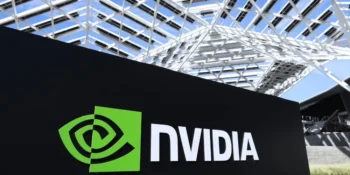In futuristic transportation, a revolutionary trend is propelling us into the next era of mobility—hyperloop technology. This innovative concept envisions high-speed, vacuum-sealed capsules hurtling through near-vacuum tubes, promising to redefine how we travel, connecting distant cities in minutes. This article explores the world of hyperloop transportation, uncovering its potential, challenges, and the transformative impact it holds for the global transportation landscape.
The Hyperloop Vision: From Concept to Reality
Hyperloop transportation represents a paradigm shift in how we envision and execute high-speed travel. It presents a solution to the challenges of congested roads and air traffic.
Efficient Urban Mobility: Redefining Commutes
At its core, hyperloop technology aims to redefine urban mobility by drastically reducing travel times. Connecting cities through tubes, these capsules offer speeds exceeding 700 mph, transforming hours-long commutes into mere minutes and enabling a new era of efficient intercity travel.
Sustainable Transportation: Minimal Environmental Impact
Hyperloop technology aligns with sustainability goals by relying on renewable energy sources and minimal carbon emissions. Solar panels and magnetic levitation systems enable high speeds and reduce the environmental footprint compared to traditional modes of transportation.
Transforming Travel: The Impact of Hyperloop Technology
The influence of hyperloop transportation extends beyond improved commutes. It has the potential to reshape economies, reduce congestion, and enhance global connectivity.
Revitalizing Economies: Hyperloop Corridors
Hyperloop corridors could transform regional economies by enabling swift travel between cities and previously considered distant regions. This improved connectivity encourages economic growth, job creation, and greater access to markets and opportunities.
Congestion Alleviation: A Solution for Crowded Roads
Hyperloop technology offers a solution to the perennial problem of traffic congestion. By moving a significant portion of long-distance travel to hyperloop corridors, urban roads can be decongested, improving traffic flow, reducing pollution, and enhancing overall quality of life.
Challenges and Innovations: Navigating the Hyperloop Landscape
While hyperloop transportation presents an exciting vision, it also faces challenges that drive innovation, regulatory considerations, and the need for comprehensive safety measures.
Infrastructure Development: Overcoming Engineering Hurdles
Designing and constructing the intricate infrastructure required for hyperloop systems presents significant engineering challenges. Innovations in materials, structural integrity, and vacuum-sealed tube technologies are critical to realizing the hyperloop’s full potential.
Regulatory Frameworks: Navigating Legal and Safety Aspects
Creating regulatory frameworks for hyperloop transportation is complex. It involves international cooperation and addresses safety, liability, and standardization concerns. Collaborative efforts between governments, industries, and research institutions are essential to ensure a safe and seamless integration of hyperloop technology.
The Future of Hyperloop Technology: Trends Shaping Travel
The trajectory of hyperloop transportation leads to trends that promise to reshape urban planning, international connectivity, and the adoption of innovative transportation systems.
Global Connectivity: Linking Continents
Hyperloop technology can potentially connect continents, transforming international travel by reducing distances to mere hours. Hyperloop corridors spanning oceans could revolutionize global trade, tourism, and cultural exchange, redefining the concept of a connected world.
Urban Infrastructure Redesign: Integrating Hyperloops
As hyperloop technology matures, urban planners and architects are considering integrating hyperloop stations into existing urban landscapes. These stations could serve as hubs for seamless multimodal transportation, connecting hyperloop routes with other public transportation systems.
Conclusion
Hyperloop transportation is not just a futuristic concept—it’s a revolution in how we perceive and experience mobility. By embracing hyperloop technology, we embark on a journey that shrinks distances, transforms economies, and redefines our relationship with travel. While challenges involving infrastructure development and regulation persist, the path forward is illuminated by innovation, collaboration, and a shared commitment to sustainable transportation.
The future of hyperloop technology holds the key to rapid, efficient, and eco-friendly travel, ushering us into a new era of interconnectedness. The odyssey of hyperloop transportation is a voyage into a realm where distance becomes a mere inconvenience. This journey invites us to embrace an era where speed and sustainability converge on the fast track to tomorrow’s mobility.










